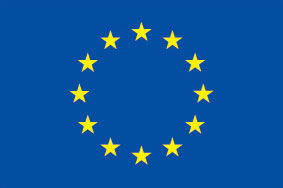According to the official report of the Vietnam Statistics Bureau, the total pig herd has grown by 3.6% over the last year. Farms have been able to control the effects of the pandemic, and thanks to some state policies, they can now bet on increasing their production. [1]
Even so, final retail prices are still growing, as a consequence of the continuous increase in live pig prices. Currently, prices are reaching record highs, also with a local supply not keeping up with rising demand. In this difficult context, imported pork remains an important way to support the market, thanks to its more stable and predictable nature. Imported frozen pork is the fastest growing product in the meat and meat products category [2]. Despite the domestic improvements and the fact that the entry tariff is at 10%, imported pork is still cheaper than domestically produced pork. Vietnam imported pork from 17 different markets in the first four months of 2025, the main partners being Russia (52%), Brazil (31.5%), and the European Union (12% approx.) [3] . After all, these are countries with an industry that is characterised by large plants and factories, way more prepared than the family-scale small Vietnamese farms. Imported frozen pork was 35-40 percent cheaper than domestic pork. Imported pork, significantly cheaper than the domestic variety.
The government is trying to counteract the rise in prices by facilitating the arrival of more imported meat, working on FTAs and other bilateral agreements with countries such as the United States [4]. Currently, there is a possibility that pork from the US could reduce tariffs. This is a proposal that is still being negotiated, mainly due to the American interest in competing with Brazilian pork prices. The elimination of the tariff would be welcomed by large importers but has aroused some concern in several associations and local farms, since such commercial moves could undermine the efforts made to modernise and overcome the impact of the ASF.
The struggle for the generalist market does not totally affect the leading position of European pork, with quality and safety standards above the rest. Vietnamese importers are aware of the difference and willing to pay a little more for higher-quality meat and traceability. Even so, it should be noted that European pork prices are falling or correcting themselves after a few difficult years. Spain maintains a considerable stock and is in a position to compete with other markets, with production prices that have fallen and are back to 2022 levels. Feed and raw material prices are on a downward trend [5]. Also, currently, liveweights have risen 5kg on average in Spain, helping to optimize these production costs and favouring competitiveness [6].
[1] https://mediacdn.vietnambiz.vn/1881912202208555/files/2025/06/27/bao-cao-thi-truong-heo-hoi-thang-5-2025-20250627100549497.pdf
[2] https://van.nongnghiepmoitruong.vn/vietnam-increases-imports-of-frozen-pork-d742368.html
[3] https://mediacdn.vietnambiz.vn/1881912202208555/files/2025/06/27/bao-cao-thi-truong-heo-hoi-thang-5-2025-20250627100549497.pdf
[4] https://www.cnbc.com/2025/07/03/what-the-us-vietnam-trade-deal-tells-us-about-the-future-of-tariffs.html
[5] https://www.mapa.gob.es/dam/mapa/contenido/ganaderia/temas/produccion-y-mercados-ganaderos/sectores-ganaderos-2/porcino/informacion-del-sector/indicadores-economicos/dashboardporcino1trim2025.pdf
[6] https://www.pigprogress.net/world-of-pigs/country-focus/what-was-driving-spains-pig-performance-in-2024/




